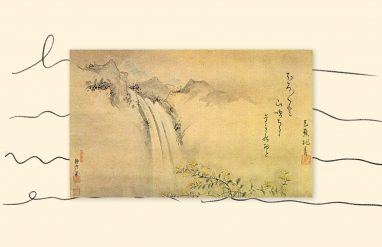In 1815, a volcanic eruption in Indonesia clouded skies across the world, leading to the “year without a summer” in 1816. Crops failed, storms dragged on, and the air itself seemed poisoned, as if the earth had turned against its inhabitants. That summer, John William Polidori, Mary Shelley, Lord Byron, and Percy Shelley gathered at the Villa Diodati in Switzerland, where they passed the time inventing ghostly tales that fed on the unnatural gloom outside their windows. From that session came Mary Shelley’s Frankenstein and Polidori’s The Vampyre, works that shaped modern horror and set the stage for centuries of storytelling.
Fortunately, you don’t need dreary weather to craft a frightening tale — though it certainly helps! Even if it’s bright and sunny outside, here are a few ways to add darkness to your writing:
Follow your own fear
Start with the things that unsettle you most: Have you ever found yourself looking over your shoulder during an evening walk? Does the sight of blood make your stomach churn? What would happen if a loved one began acting strangely? Your own fears are the seeds of effective horror, translating easily from writer to reader simply because it’s easier to articulate what frightens you most. If a detail makes you uneasy, it can do the same for your audience, so take familiar surroundings and twist them to the point of eeriness. Make these elements vivid, too. Perhaps imagine a hallway that smells faintly of rot, a toy that sings when no one has touched it, or a chair that feels warm long after it should have cooled. Warp the ordinary into untrustworthiness, forcing readers to feel their expectations and sense of safety unravel in small but unforgettable ways.
Choose tone words that deepen unease
Your diction (word choices) can prepare the reader for a frightening narrative ride by awakening their senses. Adjectives such as ashen, grotesque, clammy, unnatural, and looming can transport your reader into a Gothic castle or a fog-drenched wood, while verbs like seep, splinter, gnaw, and slither evoke decay and dread. Nouns such as cadaver, abyss, apparition, and viscera strike directly at the body and the imagination. Build your story with words that press against the reader’s nerves.
Keep an open mind
Some writers like to plot out the whole story first, while others like horror master Stephen King advise starting with a charged situation before letting the characters drive the story forward to an unknown conclusion. There’s no real “correct” method; the most important thing is keeping an open mind. Your characters and situations may change as you go along, and that’s perfectly fine. Placing characters in the middle of tension and letting them react without excessive control may help your story twist in ways even you as an author might not anticipate.
Build dread through imagery, atmosphere, and omission
Although you’ll eventually need to give your reader a sense of closure, horror as a genre thrives in mystery and the unexplained, from objects moving on their own, to ghosts lingering in the world of the living, to a monster that’s been lurking in the forest for centuries. Create a void that the reader instinctively fills with fear by holding back exposition and allowing the imagination to summon what lurks outside the frame. In other words, show evidence of something frightening without fully explaining what’s there. Maybe the lights go out just as the main character opens the door to investigate a sound. Leave the reader hanging at the end of a chapter, grasping to figure out what comes next.
A scary story endures because it leaves residue in the mind; when you begin with your own fear, sharpen your language, and balance sound with silence, you create an atmosphere that haunts long after the book is closed. If you get stuck, try reading both short- and long-form horror fiction from icons like Edgar Allan Poe and Anne Rice for inspiration. You can also research real-life events throughout history that have evoked fear and mystery. Remember that horror inspiration can be found anywhere, even in the seemingly ordinary…












